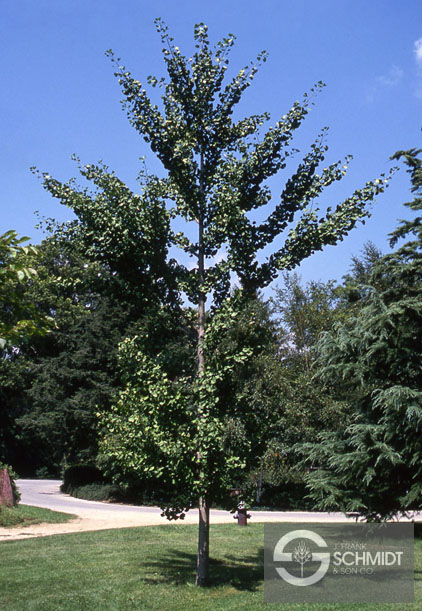| PSC 2620: Woody Trees and Shrub | Course Home | Week 5 |
Ginkgo biloba - Ginkgo or Maidenhair Tree
Plant Viewer
 |
 |
| The leaf is a unique fan shape with a notch in the apex of the curve of the leaf. | They are arranged in whorls , arranged alternately on the stem. |
 |
 |
| Female trees produce fruit that has a foul odor when crushed. | The bark is brown with moderately-spaced furrows. |
Plant Description
Ginkgo biloba is a truly unique species, having its own division in the classification system. It is a living fossil, having been on Earth for more than 250 million years. Its long existence can be credited to the remarkable combination of its hardy nature and extreme resistance to disease and insects. If there was ever a trouble-free tree, this is it. It grows slow to 50-80 feet in height, with a spread of 30-40 feet.
The leaves of the Ginkgo are its most unique attribute. They are arranged in whorls which alternate along the stem. There are 3-5 leaves in each whorl. The 2-3 inch long leaf is fan-shaped with a notch at apex of the fan. The leaves turn an attractive bright yellow in fall and drop very quickly. A tree can literally drop all of its leaves within only a couple of days, making it very easy to deal with leaf litter in the fall.
The only drawback to the Ginkgo is the fruit that is produced by female trees. The round fruit can be up to 2 inches in diameter, and is produced in clusters. The flesh of the fruit is messy and has an extremely rancid smell. Only male cultivars of the species should be planted to avoid this problem.
Landscape Use
Ginkgo biloba is an excellent selection for a shade tree or street tree, or as an accent tree in a large landscape. Because it is tolerant of almost any soil condition, it can be planted in the most difficult locations and still be expected to thrive.
Points of interest
Ginkgo is a dioecious broadleaf conifer.
Notable Cultivars
Autumn Gold A male selection with a symmetrical and broad pyramidal form. It has good yellow fall color. Grows 50 feet high.
